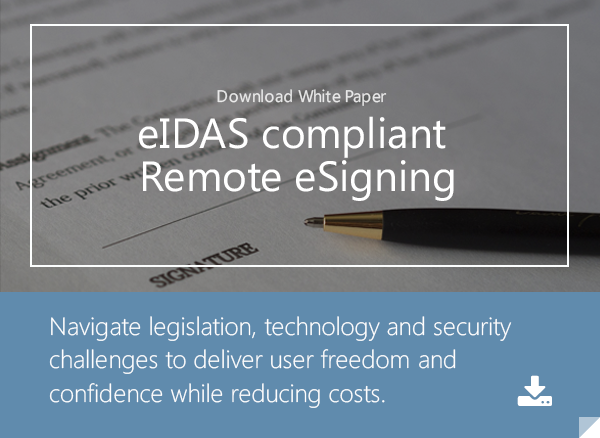
eIDAS has brought a breath of fresh air to a darker aspect of the technological sector; it’s taken a subject that is sometimes surrounded by a cloud of mystery and confusion (that of security and encryption) and infused it with transparency.
eIDAS stipulates clear, common standards for the use of electronic signatures; through the common ground of eIDAS, all organizations are encouraged to centrally adopt the most suitable solutions.
Contributing to adopters’ success and growth
The transparency aspects of eIDAS contribute to the success and growth of its adopters in the following ways:
- eIDAS sets a high public standard for service providers. Qualified trust service providers are required to abide by certain standards and protocols in order to retain their status as approved providers. The eIDAS regulation directs supervisory bodies to share any concerning audit results with the appropriate authorities in order to ensure the integrity of these service providers.
- The additional level of monitoring and compliance around service providers grants confidence to the technology user; they know that the solution provider is under high external pressure to perform up to promised levels.
- The additional level of monitoring and compliance around service providers grants confidence to the technology user; they know that the solution provider is under high external pressure to perform up to promised levels.
- Transparency also facilitates progress in the technologies – since providers are working towards a common standard, they can better share ideas and innovation around best practices.
- Transparency makes it easier for organizations that are not as technically adept to adopt new technologies.
- If left to their own devices, some groups may not know where to start with adopting electronic signature technologies. Since certain standards are mandated and public, they have some guidance when choosing tools and can more quickly and confidently make investments.
- If left to their own devices, some groups may not know where to start with adopting electronic signature technologies. Since certain standards are mandated and public, they have some guidance when choosing tools and can more quickly and confidently make investments.
- eIDAS brings a functional level of transparency to the core organizational operations. The acknowledgment of electronic signatures is binding, and their acceptance in a legal setting will bring new levels of transparency to legal proceedings.
Not only do electronic signatures help reduce paperwork errors or content omissions that can be costly in the event of a dispute, but they also enable a higher level of auditing to track event and version history. This proves very useful in a courtroom or other regulated setting that requires a great deal of supporting documentation.
Conclusion
Due to the looming threats of breaches and importance of cybersecurity to stakeholders in all sectors, it’s critical that technologies and processes possess a level of transparency. eIDAS satisfies this need for transparency in more than one way.Not only is the regulation transparent about defining and recognizing qualified service providers, but it encourages transparency among entities as they work together towards the goal of furthering their individual business needs.
This trust among agencies and states will be an important element of successful business relationships now and in the future.
References and Further Reading
- Selected articles on Digital Signatures (2014-16), by Ashiq JA, Guillaume Forget, Peter Landrock, Torben Pedersen, Dawn M. Turner and Tricia Wittig
- REGULATION (EU) No 910/2014 on electronic identification and trust services for electronic transactions in the internal market and repealing Directive 1999/93/EC(2014) by the European Parliament and the European Commission
Image: "Auf dem Reichstags-Gebäude" courtesy of Tobias Wutzow, Flickr (CC BY 2.0)
